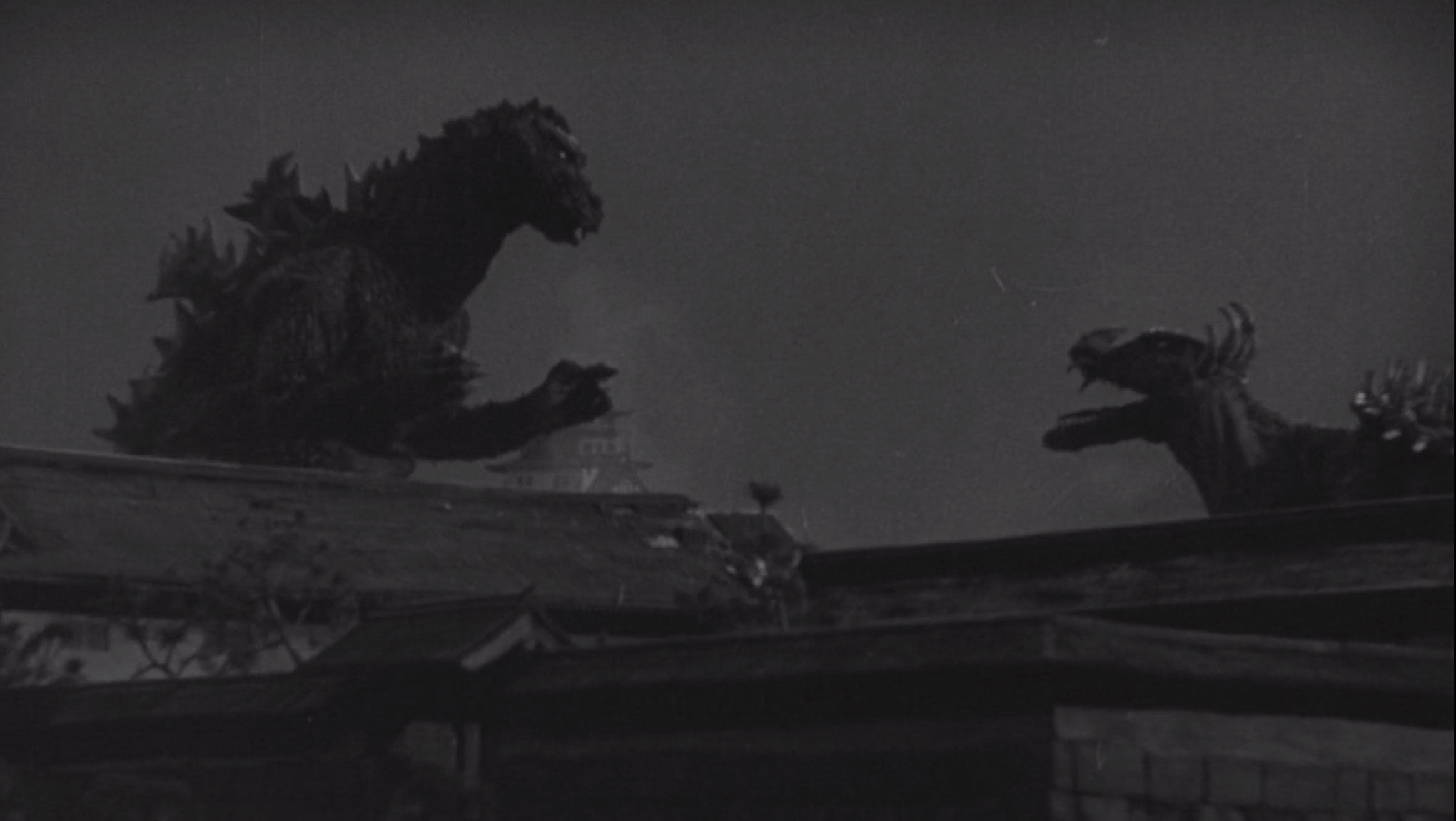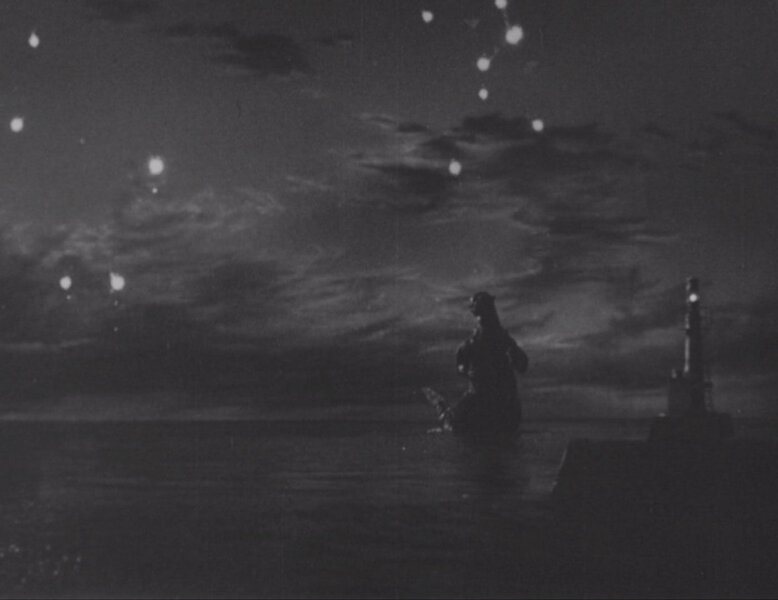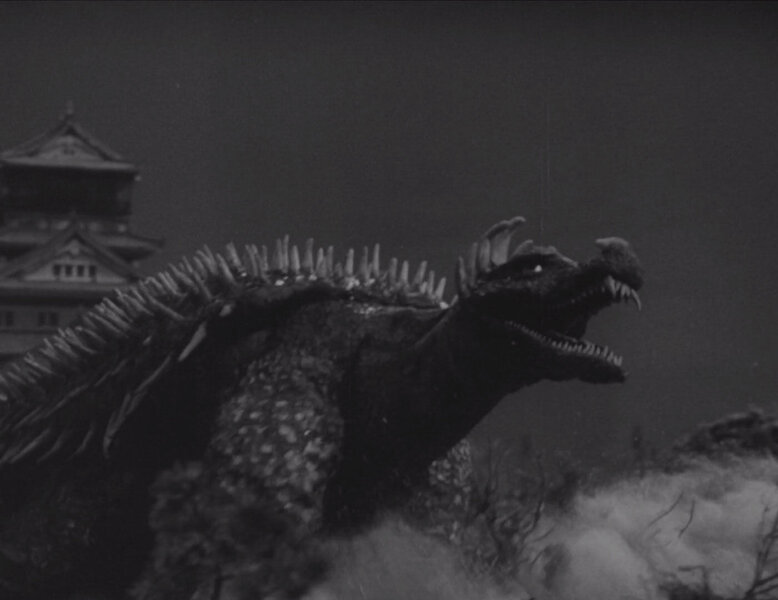Create a free profile to get unlimited access to exclusive videos, sweepstakes, and more!
Godzilla Raids Again, the first Godzilla sequel, was more than a quick cash-in

In the finale of Ishiro Honda’s Godzilla (1954), a forlorn scientist journeys to the bottom of the ocean, carrying with him the Oxygen Destroyer, a device capable of wiping out all life in Tokyo Bay. Having accidentally discovered the weapon during his research, he has agreed to unleash its destructive power in order to save Japan from Godzilla.
Reluctantly, the scientist activates his creation at the seafloor and then cuts his own oxygen and support lines — sacrificing himself to ensure the Oxygen Destroyer is never used again. Godzilla’s defeated, and the movie ends with one of the characters somberly pontificating that the continued use of nuclear weapons could result in another monster appearing somewhere in the world.
Despite the seemingly open-ended nature of this ending, the filmmakers behind Godzilla had no immediate plans to produce a sequel. It was only after the film became a huge success, selling more than 9 million tickets domestically, that studio executive Iwao Mori told the staff at Toho to “make another one.”
Five months later, a sequel called Godzilla Raids Again (1955) appeared in Japanese theaters and was similarly greeted with lucrative box-office receipts, though it’s hardly gone down as a classic in the minds of most genre fans.
Godzilla Raids Again has long been derided as something of a tacky misfire, a rushed production notable only for its historical significance as the first Godzilla sequel and for introducing the concept of Godzilla fighting another monster. And to be fair, the criticisms aren’t entirely unfounded. The script’s odd structuring kills off the enemy monster only two-thirds of the way in, and none of the human characters are especially three-dimensional. Moreover, the special effects are manifestly hampered by the hectic shooting schedule, and the picture as a whole simply does not exhibit the same level of pathos that made the first movie so special.
On the other hand, there are a number of interesting qualities to this film that often get overlooked. And with the recent re-release of Godzilla Raids Again as part of Criterion’s Godzilla: The Showa Era Films box set, we thought now would be an ideal time to look back on the franchise’s very first sequel and articulate some of its less discussed merits.
The original Godzilla famously touched on the paranoia of the nuclear age, the eponymous monster functioning as a doppelganger for the hydrogen bomb. Godzilla’s attacks on civilization intricately replicated the destruction of numerous Japanese cities during the Second World War — not to mention the human suffering that went with it — and the picture’s closing monologue essentially warned audiences that further nuclear tests would just lead to another disaster (i.e. more Godzillas). Godzilla Raids Again starts off by confirming the first movie’s premonition (atomic tests have awakened a second Godzilla, along with a new monster called Anguirus) before seguing into a plethora of wartime-like scenes of evacuations, cities burning, and the military scrambling to maintain track of the enemy.
However, as the story progresses, Godzilla Raids Again shifts into a somewhat different direction. At its core, it’s a film less concerned about showcasing the consequences of a disaster and more keen on following the survivors who have to rebuild their lives in the aftermath. The protagonists are not scientists or ambitious journalists but, rather, ordinary citizens who try to maintain the normality of their lives in spite of the disaster that unfolds before them. After briefly overseeing the destruction of their city, they assume an optimistic mood, refusing to let the tragedy impede their future. (One man shows his business partner the ruins of their factory and assures him he will rebuild it.)
As the film presses along, they rejuvenate their livelihood, reunite with old friends, find romance, and prepare for a blissful future. Never are they shown interacting with Osaka’s mostly implied human casualties (the city destruction here is nearly bloodless); thus, they take on a more lighthearted attitude than the idealistic protagonists of the first movie. Only when Godzilla reappears in the third act and threatens to destroy everything they’ve rebuilt do the heroes become especially active in the quest to rid humanity of the monster.
While I have no way of knowing whether the staff consciously thought about this, Godzilla Raids Again strangely fits into a mold occupied by various non-kaiju films of the time period: movies that depicted war or war-like events and then showcased the people who had to start over. One example that comes to mind is Hideo Oba’s phenomenally popular trilogy What Is Your Name (1953-1954), about ordinary people who lose their homes in the firebombing of Tokyo and spend the rest of the narrative amid or away from the ruins attempting to restore their happiness, namely through finding love.
Godzilla Raids Again stays true to its science fiction framework, with the monsters creating war-like images (Osaka burning) before capturing context akin to its non-genre contemporaries. If the original movie was about disaster, the sequel is about the people who pick up themselves and move on in the wake of disaster, and in that sense, it’s less a rehash of the original movie and closer to a thematic extension.
Godzilla Raids Again’s director, Motoyoshi Oda, is commonly remembered by Japanese film historians as a nondescript journeyman: a fast-working company man who always stuck to his budget and had no real discernible aesthetic. He sometimes made up to eight movies a year but never emerged as really anything but a competent worker. On the other hand, while he’s similarly never struck me as an auteur, Oda’s merits certainly went beyond mere dependability. As is evident in the entire Osaka sequence of Godzilla Raids Again, an astonishing piece of filmmaking rife with tension, atmosphere, and nightmarish images.
Oda does a marvelous job establishing an initial mood of tranquility, beginning the sequence in a nightclub with civilians weaving to a romantic love melody before plunging everything into chaos as news of Godzilla’s approach sends the crowd into uncontrolled panic. From here, the director juxtaposes shots of the city enveloped in darkness with terrified people fleeing into the countryside as the military lures Godzilla away from Osaka. A lengthy mid-scene section involving criminals escaping from the police during the evacuation makes for a nice diversion and keeps the tension going until the monster returns, and it's all efficiently handled by Oda, here demonstrating a more confident hand at action directing than Ishiro Honda, whose chase scenes and shootouts tended to be rather slow and static.
As the scene continues, Oda and special effects director Eiji Tsuburaya blend their footage together exquisitely: The criminals attempt to escape in a fuel truck and end up crashing into an oil refinery, starting a fire that draws Godzilla — and, later, Anguirus — to land. And let it be said that a silent moment of the film’s heroine watching her city burn from a distance stands out as one of the most chilling moments in any Godzilla movie. Oda may not have been some kind of visionary, but the Osaka sequence alone demonstrates he was hardly someone who made a film without a single thought in his head; that the movie’s as well-crafted as it is (given the short production schedule) is a real testament to his strengths as a filmmaker.
To reiterate, Godzilla Raids Again is far from being a masterpiece. But as a piece of craftsmanship and as a reflection of the postwar era in which it was made, it is quite fascinating and, in many senses, worthy of careful consideration.




























